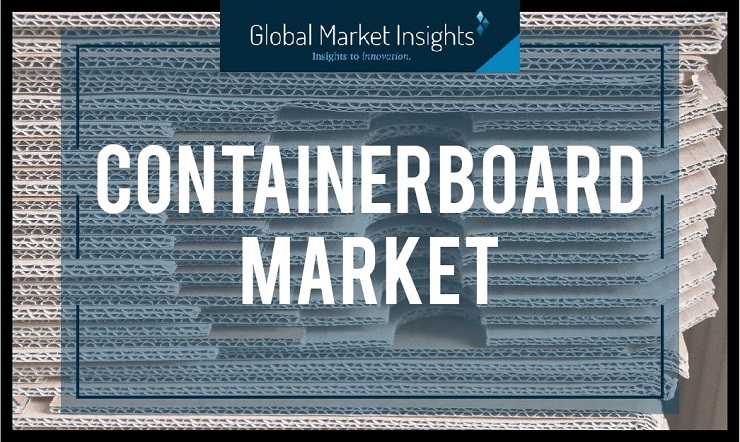Global Containerboard Market amass considerable proceeds from recycled corrugating medium, emerging recycling trends to influence the industry dynamics
Publisher : Fractovia | Published Date : 2019-06-04Request Sample
Rising disposable incomes worldwide has stimulated the growth of the containerboard market extensively, owing to increased consumption of packaged food, beverages, medicines, personal care products and clothing. The retail segment has seen continuous expansion through the increasing number of supermarkets, shopping centers and brand outlets, generating unprecedented demand for effective, reliable and affordable packaging solutions. Apparently, the use of containerboard as a packaging material to make corrugated boxes can be attributed to its light weight, strength and the versatility it offers. From transporting fragile goods and electronic appliances, bulk groceries and chemicals to delivering products ordered online, the containerboard market is predicted to gather massive revenues from distinct packaging applications.

A vital platform flourishing the domain of containerboard packaging has been the e-commerce sector, which has emerged as a prominent business driver for big and small FMCG and industrial players. In addition to regions such as the U.S., Canada, U.K. and other European nations, e-commerce has also become a widespread trend across developing economies, including Asian and Latin American countries. It is estimated that global retail e-commerce sales had reached a value of over US$2.2 trillion in 2017, demonstrating the extraordinary potential existing for the containerboard market from surging online sales. The large number of packages being delivered to businesses and households alike also create opportunities for recycling of old corrugated containers, and this not only applies to goods sold online but packaging used throughout all sales channels.
Unveiling the scope of containerboard market from the use of recycled corrugating medium
Not surprisingly, the accelerated growth of the packaging industry has resulted in subsequent environmental concerns, arising from inappropriate disposal of delivery boxes and other materials. As more packaging could mean a higher feedstock for landfills and waste burning facilities, businesses such as craft paper manufacturers are opting for the use of recycled fibers in their products. Reports confirm that almost 67% of all packaging waste in Europe had been recycled in 2016, which indicates enormous possibilities for the containerboard industry as well.
Essentially, using recycled corrugating medium allows reduction in manufacturing costs and lesser quantity of discarded materials being released into the waste stream. According to the American Forest and Paper Association, in 2017 about 88.8% of corrugated containers in U.S. had been retrieved for recycling, where over half of the recycled fiber used in the production of paper and paperboard is consumed by containerboard manufacturers. Enumerated below are some key producers in the containerboard market and their progress in terms of utilizing recycled materials:
International Paper, operating out of Tennessee, U.S., is responsible for collecting, consuming and selling over 6 million tons of all paper materials recovered in the country, becoming one of the biggest corrugated box recyclers in North America. It also has a recycled containerboard mill in Morocco to serve the domestic box demands and in 2016, had taken over a facility in Spain to convert it for producing recycled containerboard.
Mondi Group, based in Austria, is one of the leading players in the containerboard market globally which owns numerous profiting resources, including a recycled containerboard mill in Germany it acquired a few years back. More recently, the manufacturer has ordered a new a production line which will use old corrugated boxes as a feed, for the production of new and environmentally sound materials.
Smurfit Kappa, headquartered in Dublin, Ireland, boasts of a large variety assets, which include 48 recycling plants and 36 paper mills. In 2018, the company unveiled a new recycling facility in Spain to bolster its recovered paper services. This year, realizing the demand for plastic packaging alternatives, the company expanded its mill in Netherlands to enhance its capabilities as a supplier of recycled paper grade materials.
In a nutshell, profits for containerboard manufacturers have climbed tremendously due to the rise in retail sales, while increased preference of deploying recycled materials has gradually transformed the overall packaging sector. Estimates suggest that the global containerboard market is poised to record annual remunerations of over US$250 billion by 2025, instigated by remarkable consumption of lightweight packaging solutions.